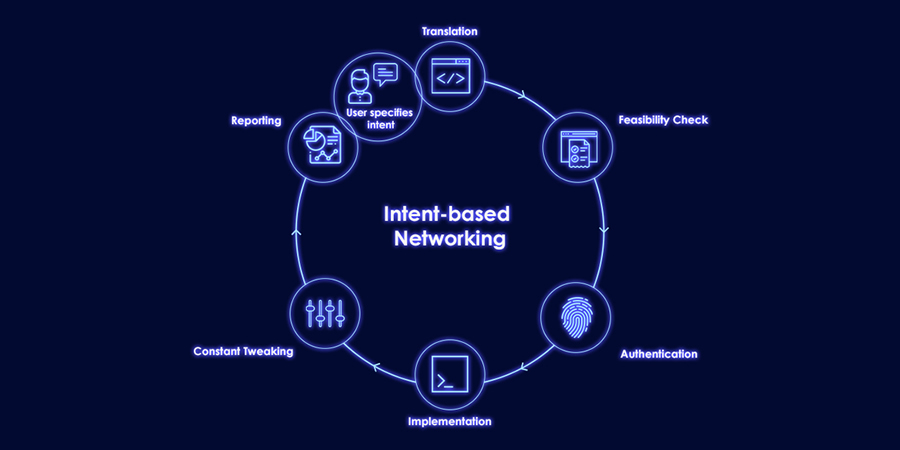Upgrading networks has always been a dynamic process to keep businesses on the go. However, today’s network architecture and infrastructure constantly need upgrades and balance between enterprise networks with residential ones because of a surge in demand for internet-enabled devices for education, remote working, streaming, and online gaming which requires better network coverage and infrastructure..
Moreover, the growth in traffic volumes has given rise to stiff price competition for the carriers and suppliers who are often forced to deliver more with less for the sake of business sustainability. Slow and inefficient networks are vulnerable to attacks, outages, and downtime, costing businesses huge losses in time and money.
While network automation has become possible and essential to delivering better application use or service to an end-user with the advancement in machine learning, automation, analytics, and orchestration, the unprecedented use of devices and other applications is still quite a handful of load for networks. Configuring each device manually in a large network is simply taxing. This also means that there is every chance for something to go wrong and likely to involve a lot of troubleshooting along the way.
Enter intent-based networking (IBN)
Considered an evolution of software-defined networking (SDN), intent-based networking builds upon that technology to enable a higher level of intelligence that can define what tasks are to be automated.
As per Gartner, IBN is a “software that helps to plan, design and implement/operate networks that can improve network availability and agility.”
By combining automation with intelligence, the IBN system can constantly adapt, learn and protect networks based on the organization’s intent through closed-loop automation that includes business intent capture, translation, and activation, monitoring, and adjustment in line with business intent with minimal human intervention.
Apt examples of IBN use cases are virtual assistants such as Siri, Alexa, or Google Assistant, which we have become familiar with in recent times. Other examples could be Google maps and other navigational services, which allow users to select the destination and automatically come up with alternatives for the best route for the journey.
For instance, business intent for network operators could be the configuration of specific network topology, constructing 5G NR cells in a thickly populated city, locating sleeping cells in a network for a stipulated time, or improving the customer satisfaction score in a cluster of cells. This top-level requirement is then divided into multiple smaller intents, corresponding these requirements into layers – with each layer then striving to achieve its intent until the targeted goals are achieved.
IBN utilizes machine learning and cognitive computing to enable more automation by reducing manual configuration and management in network configuration to help network administrators define an outcome or business objective whereby the software finds a way to achieve that goal.
Besides that, IBN also predicts changes in the business objective and recommends complementary actions to make the network faster, more agile and minimize errors. IBN can make servers reachable from specific networks and configure network changes whilst monitoring their performance.
The intent-based networking edge
IBN has some clear advantages over regular networking and even over software-defined networking.
Reduction in manual tasks: IBN saves the time of a network administrator to configure a network to comply with a new policy or business need. It verifies whether a configuration will work or suggest the administrator alternatives to the desired configuration.
Quicker troubleshooting and resolve: IBN’s continuous self-monitoring allows detection of performance issues, leveraging machine learning to determine the best solution and implement it.
Greater compliance: The network’s efficiency in remaining compliant with company policies set by the network administrator is higher.
Enhanced security: In the process of network monitoring, IBN spots potential threats, even in encrypted traffic and alerts for security breaches.
Optimized analytics: Network administrators are in a better position to make better decisions on the network’s performance based on the data gathered by IBN sensors, thus providing valuable information about network performance, security threats, etc.
Moving forward
Network enhancements to build a transformative 5G network expansion is a must for an organization’s continuous commitment to empowering customers with solutions and services that enhance their digital lives, improve its existing network, and meet the increasing demand for seamless connectivity.
By harnessing the benefits of intent-based networks, carriers and service providers can transform specific operational KPIs intuitively and take counteractive action in real-time. The combination of intent and automation to network operations significantly reduces the network configuration time for planning, testing thereby fast-tracking response times and delivering smoother network management by allowing network administrators to quickly review and choose from inspected configuration, with a guarantee of secure network operations and substantial return on investment ROI.
Along with the growth in digital transformation, complexity in network infrastructure has grown, forcing network teams to manage underlays, adopt virtualization, cloud, and wireless and wired networks. As a key part of automating network operations, intent-based networks are designed to safeguard and implement network security and prioritization policies associated with a wide variety of applications, users, and locations. Intent-driven networks with intelligent machine reasoning and full closed-loop automation provide the best opportunity for operators to create the automated environment that their businesses will require in the future. Although a fully intent-based approach to networks may not be in everyone’s mind at the moment, the benefits of such networks will inevitably be deployed across all network domains with the advancement in 5G rollouts.










